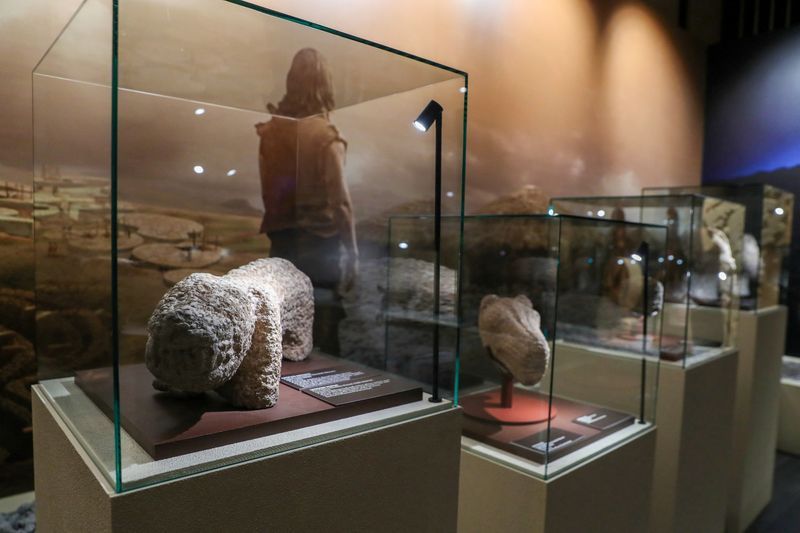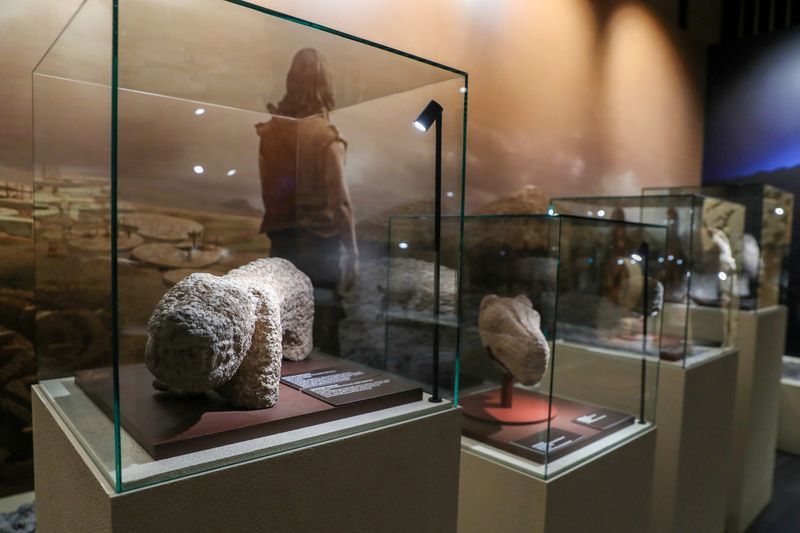
ISTANBUL (Reuters) -A set of carved stone animals – a fox, a vulture and a wild boar – is shedding light on the way prehistoric people told stories after being unearthed by archaeologists in southeastern Turkey.
Dating back some 11,500 years, the trio of figurines found at the Karahantepe archaeological site is the first known example of objects being arranged in a specific way to convey a narrative, archaeologists say.
“Telling a story undoubtedly brings storytellers to mind, and carving them into stone reveals the existence of artists. But it also proves that communities who know those stories share a common memory,” Necmi Karul, head of the excavations at Karahantepe, one of the world’s oldest Neolithic settlements, said.
Unearthed late last year, the artefacts are now on display for the first time at the Presidential Complex in Turkey’s capital, Ankara, along with other items unearthed at Karahantepe, which dates back to 9,500 BC.
The set of animal figures – each one about 3.5 cm (1.38 inches) tall – was found in a small container, covered with a stone lid, and placed inside another, larger vessel. Each of the three figurines had its head placed into a limestone ring.
The intricacies of the arrangement reflect the figurines’ use as part of a carefully prepared composition, Karul said, adding that previously only two-dimensional and often independent depictions had been found on immovable artefacts.
“With the Neolithic period and sedentism, we see a fundamental shift in narrative language,” he said.
Sedentism, or living in one place for long periods, replaced millions of years of hunter-gatherer culture and gave rise to a new social order.
“These narratives must have been the social bonds that held this new order together,” Karul said, describing the figurines as “one of the most important discoveries from a prehistoric perspective”.
PREHISTORIC SUCCESS STORY
Karahantepe is one of the earliest settlements of the Neolithic period. Nearby Gobeklitepe, a UNESCO World Heritage Site, is believed to be the world’s oldest.
Both sites are a part of a wider Neolithic research project called Tas Tepeler, or “Stone Hills”, that includes various settlements dotted across the Turkish province of Sanliurfa and where excavations are ongoing.
Karahantepe covers 14 hectares (35 acres) but excavation work carried out there since 2019 has covered only a tiny fraction of the site, Karul said.
Pillars decorated with reliefs and a complex of circular communal buildings were also found there, with a human head carved into the bedrock on one of the walls.
Karul said he planned to seek different kinds of UNESCO recognition for the site as a way to increase global interest in his team’s work.
“Modern people always place themselves at the pinnacle when compared to the past,” he said. “Karahantepe shows us how successful people were in art and storytelling 11,000-12,000 years ago.”
(Writing by Ceyda Caglayan; Editing by Jonathan Spicer and Helen Popper)






